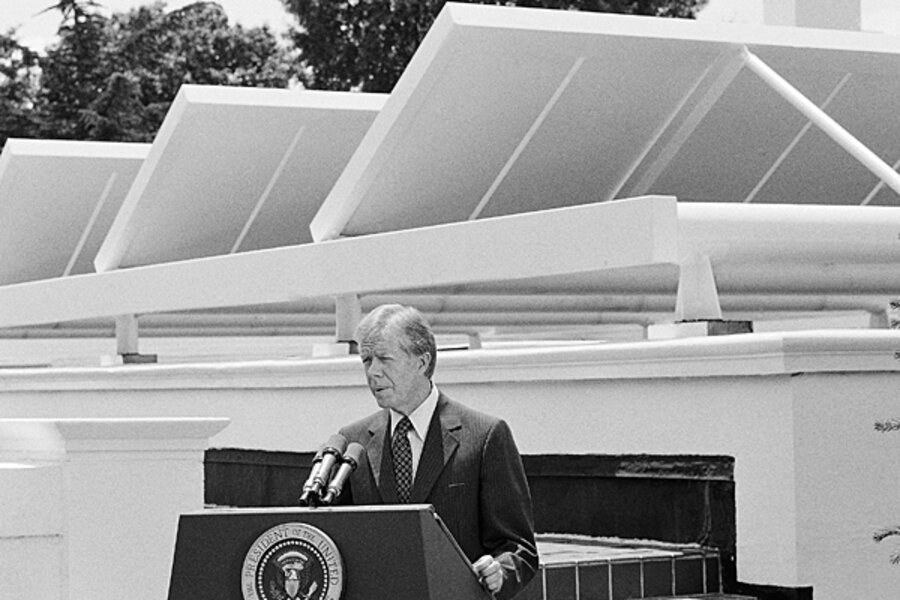With US-made panels, White House goes solar ... again
Loading...
| Washington
Nearly three years after the Obama administration promised to return solar energy to the White House, the panels are now going up.
The project reflects the president’s emphasis on green energy and was cheered by the environmental community, which had lobbied for the installation. In 1979, Jimmy Carter was the first president to put solar panels on the White House, amid the energy crisis. The panels came down in 1986, at President Reagan’s request.
“The White House has begun installing American-made solar panels on the first family’s residence as part of an energy retrofit that will improve the overall energy efficiency of the building,” a White House official said Thursday.
“The retrofit will include the installation of energy-saving equipment, such as updated building controls and variable speed fans, as well as solar generation. The project will help demonstrate that historic buildings can incorporate solar energy and energy-efficiency upgrades,” the official said.
This week’s installation may have been timed to coincide with the Obamas’ vacation on Martha’s Vineyard, Mass., so as to minimize any disruption to the family as the new energy systems are put in.
The low-key rollout contrasted with President Carter’s high-profile addition of 32 solar panels to the executive mansion. But environmentalists expressed hope that President Obama would still use the White House retrofit as a peg for a speech focused on solar energy.
“It's a real teachable moment on the capabilities of solar, the economic benefits of it, and on the climate crisis,” says Daniel Kessler, a spokesman for 350.org, one of the groups that lobbied the White House to go solar.
In April 2010, the Oakland, Calif., company Sungevity launched its Solar on the White House campaign by offering to donate a system to the White House. On Thursday, there was no word on who was installing the White House’s solar panels, or how much it would cost.
The founder of 350.org, Bill McKibben, applauded the White House move.
“Better late than never – in truth, no one should ever have taken down the panels Jimmy Carter put on the roof way back in 1979,” Mr. McKibben said in a statement. “But it's very good to know that once again the country's most powerful address will be drawing some of that power from the sun.”
In September 2010, McKibben and a group of students from Unity College in Maine took a road trip to Washington to return one of the Carter-era panels to the White House and request that it be reinstalled, or at least that the White House pledge to put up new panels. (About half of the Carter panels had been installed on the roof of the cafeteria at Unity.)
News reports at the time indicated that the students felt rebuffed. But a month later, then-Energy Secretary Steven Chu announced that the White House residence would get solar panels and a solar water heater by the start of summer 2011. That didn’t happen. On June 20, 2011, the Department of Energy said in a blog post that it would complete its “White House solar demonstration project” after the competitive procurement process had been completed.






